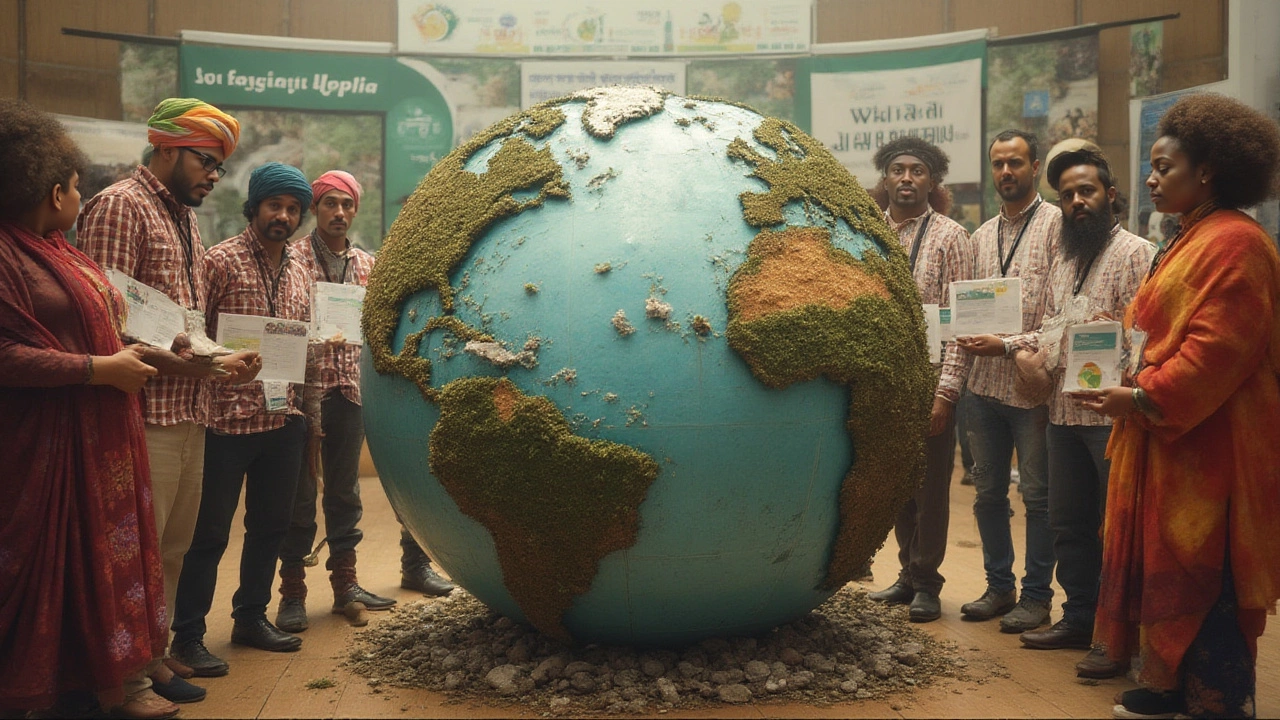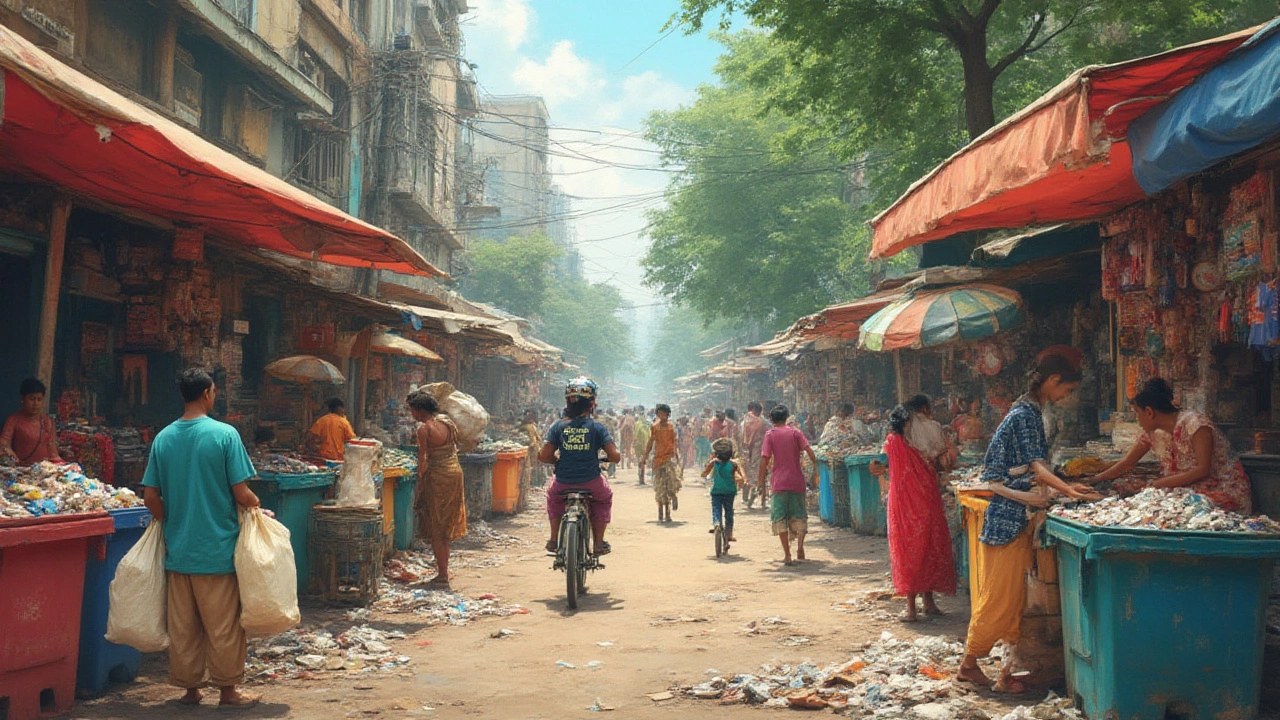Every now and then, you hear wild claims about countries going 'zero waste.' The idea sounds perfect—no trash bins spilling over, no ugly landfills, just a pure environmental dream. But is there really a place out there with zero rubbish? Spoiler: the answer isn’t so clear cut. Let’s get into the facts and the fantasy, because expecting a country to have absolutely no waste is a big stretch.
Breaking Down Zero Waste: What Does It Even Mean?
If you’re imagining a country that produces no waste at all, that’s pretty much impossible. The zero waste movement is more about sending nothing to landfills or incinerators and making sure most byproducts are recycled, composted, or reused. It’s about rethinking our relationship with stuff—avoiding single-use plastics, repairing things instead of tossing them out, and building a circular economy. The term ‘zero waste’ is more of a bold target than a scientific measurement. Even the Global Alliance for Incinerator Alternatives admits, “Zero waste is a goal we know we never fully reach, but it’s a direction, not a destination.”
Modern waste management is built around the famous '3 Rs'—Reduce, Reuse, Recycle—but plenty of savvy countries have kicked it up with policies and tech that go well beyond that. Some cities (and even small regions) claim zero waste status, but no entire country in 2025 is fully there. Instead, the best countries might send just 1–3% of their total waste to landfill. That’s some serious game, but perfection? Not quite. Still, you’ll find places where waste barely leaves a mark.
Which Countries Get Closest To The Zero Waste Dream?
Europe leads the pack when it comes to low-waste living. Germany, Austria, Sweden, and Switzerland often race each other in recycling rates. Germany is the current heavyweight champion, boasting recycling rates of nearly 67% for municipal waste according to the German Federal Statistical Office in 2024. In these countries, 'residual waste'—trash that can’t be recycled or composted—is usually just a tiny fraction.
But let’s look at the details. Germany has strict laws on packaging, and households sort everything into color-coded bins. Miss a step, and it's not unusual for your trash to be left uncollected with a note pointing out your mistake. It’s not just personal diligence—Germany’s entire system has been engineered for high recovery: fees for excess packaging, incentives for refilling containers, and huge public awareness campaigns.
Sweden has become infamous for importing waste from other countries to keep its recycling plants running. That’s partly because Swedes recycle so much, their own rubbish isn’t enough to fuel the energy-from-waste systems. Nearly 99% of Sweden’s household waste is recycled or used to produce energy. The Swedes even call their waste-to-energy plants “environmental cookers.” It’s not traditional zero waste, but it’s certainly not a landfill culture either.
San Francisco is by far the poster child in North America. Its zero waste policy started rolling out back in 2002, and the city now diverts 80% of its waste from landfill through aggressive composting and recycling. There’s strong enforcement and an army of outreach workers making sure residents don’t slack. Shops are legally required to offer only compostable or recyclable bags and containers.
But, here’s the thing: no nation, not even the most disciplined European state or energetic Californian town, is 100% waste-free. There’s always a stubborn bit of trash—think old mattresses, diapers, medical waste—that just can’t be recycled yet.
| Country | Municipal Waste Recycled (%) | Municipal Waste to Landfill (%) |
|---|---|---|
| Germany | 67 | 0.5 |
| Sweden | 50 | 1 |
| Austria | 58 | 3 |
| Switzerland | 51 | 2 |
| San Francisco | 80 | 11 |
If you want to live in a zero waste paradise, your best bets are countries with strict waste laws, high awareness, and, honestly, a culture that frowns on wastefulness. But you’re always going to find at least some leftovers slipping through the cracks.

The World’s Surprising Zero Waste Experiments
Let’s not skip the tiny rebels. Kamikatsu in Japan—population under 1,500—slashed its landfill waste to almost nothing. They have 45 detailed categories for sorting rubbish and offer workshops to teach new arrivals how to get it right. A local shop called the 'Kuru Kuru' sells only second-hand or upcycled goods. Sure, it’s a small community, but it proves that habits matter. Alex Steffen, a sustainability writer, put it bluntly:
“There is no such thing as ‘away.’ When you throw something away, it must go somewhere.”
Slovenia’s capital, Ljubljana, has often been called the first EU capital to adopt a zero waste goal. It ramped up door-to-door waste collection, set up 800 recycling stations, and now recycles close to 70% of waste, way above the EU average. They even penalize residents for tossing food scraps or recyclables in general trash bins. The city’s waste is shrinking so much that their landfill is being reimagined as a recreation park for the next generation.
Then there’s South Korea, where 'Pay As You Throw' policies have people paying for non-recyclable waste by the bag. Tech plays a part too; food scraps are dropped in special bins that weigh and charge you by the gram. It’s not exactly total zero waste, but South Korea has reduced food waste by 20% in the last decade, which is huge in a world struggling with overflowing landfills.
New Zealand’s little town of Raglan set up Zero Waste Education programs, composting schemes, and has local celebrities running clean-up events. They’ve managed to slash landfill waste by more than 70% in just a few years by making it personal and involving everyone.
But these places are outliers—small towns, particular cities, or devoted communities. Scaling that to a whole country is a beast of a challenge, facing diverse economies, budgets, and, frankly, habits.
Barriers to Zero Waste: What’s Really Stopping Us?
At this point, you might wonder, 'Why can't other places just copy those systems?' Well, a lot stands in the way. Different countries have their own hurdles. For poorer nations, waste collection is often informal, with 'waste pickers' making a living from recycling what little they can find. Even in Europe, rural areas sometimes lag far behind the big cities in eco habits and public services.
Packaging is another thorny issue. From supermarket fruit wrapped in layers of plastic to those impossible-to-open toy shells, single-use packaging is tough to ditch entirely. The pressure to keep stuff cheap and easy for consumers often means more trash, not less.
Technology helps, but it’s not magic. Even the best sorting machinery leaves a few percent of ‘residues’ at the end, and until new recycling tech comes along (think advanced plastics recovery or molecular recycling), some waste will always escape the net. Then there are cultural habits—some folks still view composting or recycling as a hassle, not a duty.
Even places that appear to go waste-free often rely on exporting their toughest rubbish to other countries, quietly shifting the burden. That’s a global problem: Western countries have sent cargo ships packed with 'recycling' to Southeast Asia, only for it to be dumped or burned by under-regulated operators. It paints a harsher picture than some official stats admit. So while a zero waste society sounds romantic, it needs global cooperation, stricter laws, and some big changes in consumer attitude and industrial design.
Here's a quick look at the hardest items to keep out of landfills:
- Disposable nappies and sanitary products
- Certain types of plastics (like black plastic trays)
- Composite packaging (juice cartons, aseptic pouches)
- Broken electronics with hazardous parts
- Medical waste

Can You Go Zero Waste at Home?
Now you know there isn’t a magic zero waste country out there, maybe you’re thinking, ‘What about me?’ Good news is, you don’t have to wait for politicians or big companies to start making changes. Start small but steady—stash the reusable shopping bags next to your keys, pop a water bottle and coffee cup in your bag, or join your local refill scheme. Countless studies show most household bins are full of packaging, food scraps, and stuff that’s easy to avoid with a little planning.
Get clever with composting (your council might even subsidize a bin), buy loose fruit and veg, store leftovers in glass jars, and say ‘No’ to freebies you don’t actually use. Swap throwaway razors for a sturdy metal one, stick labels on jars for a cool pantry look, and get into the not-so-secret world of charity shops—less waste, more style.
If you’re serious about cutting landfill waste, here are a few pro moves:
- Track your trash for a week to see what you actually throw out. It’s usually eye-opening.
- Switch your bills and statements to digital where possible—fewer envelopes, less paper waste.
- Host a 'mend and swap' party with friends to fix or exchange clothes and gadgets.
- Choose products with warranty and repair services, not just cheapest price tags.
- Give your neighbours a tip or two! Waste habits spread fast when people see it’s not so hard to change.
Don’t be discouraged by imperfect systems. Even if no country truly hits zero waste, every bit less in the bin counts. As of this year, England’s landfill tax is £102.10 per tonne, so there’s a financial reason to waste less too. Think of it like football—every goal matters, even if it’s not a total clean sheet.
